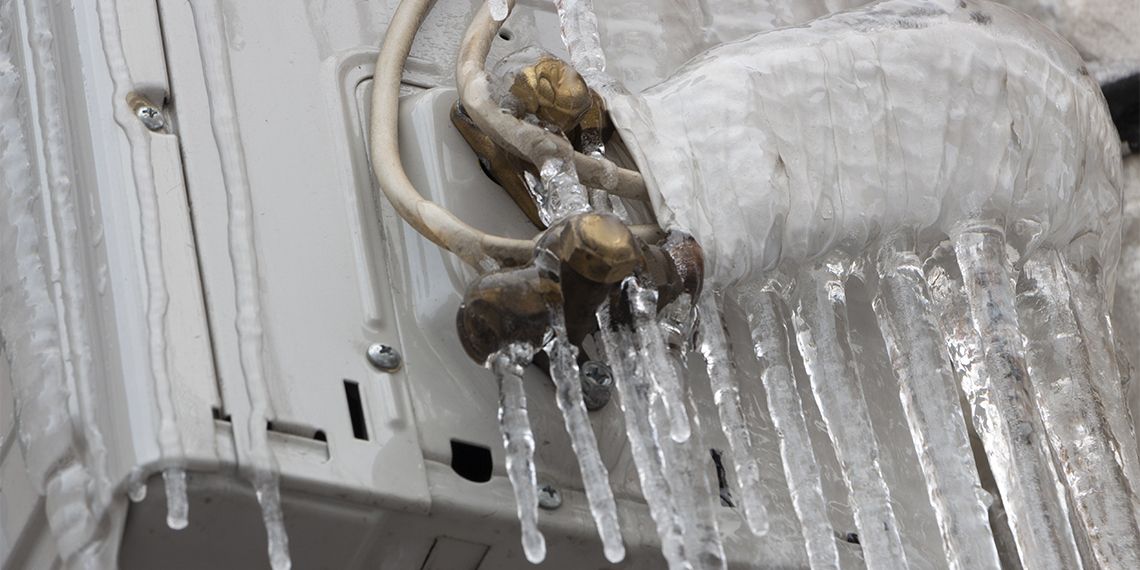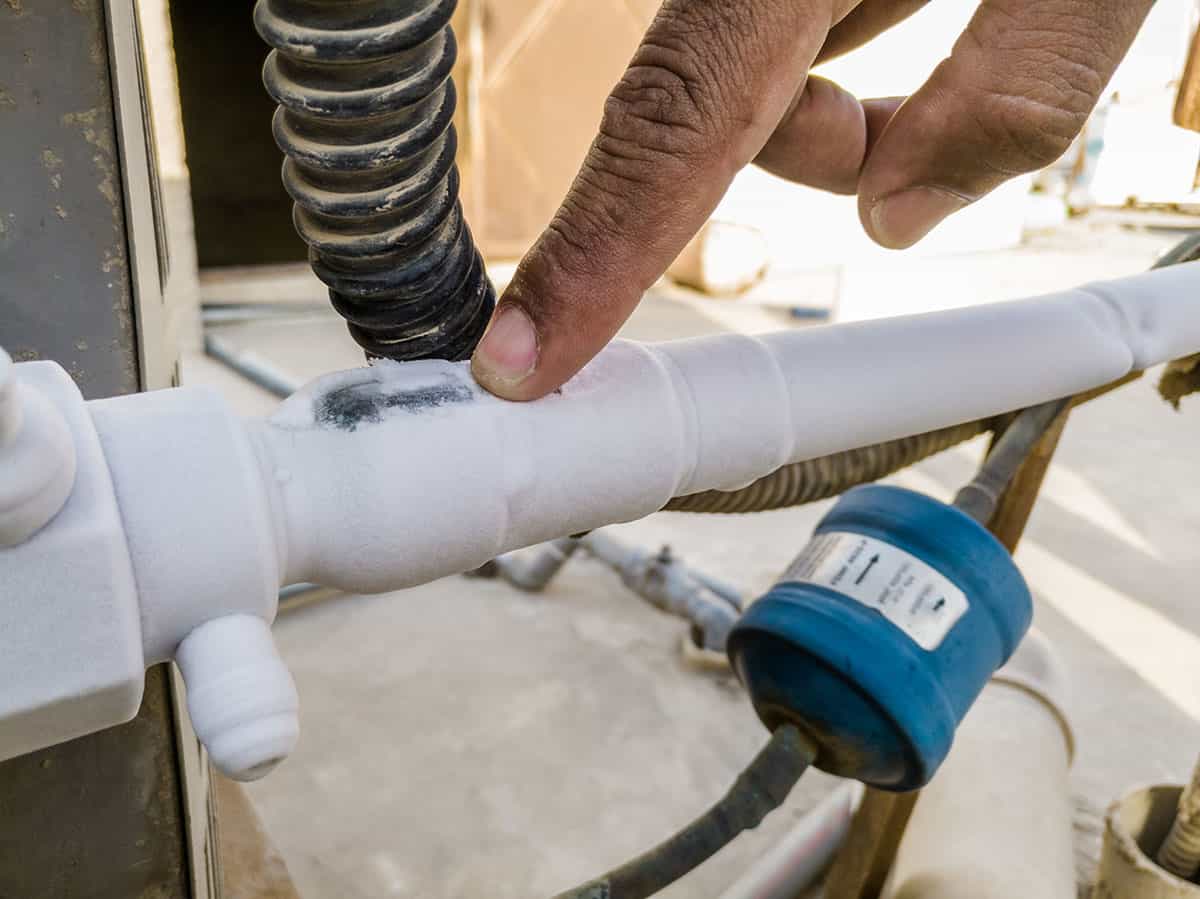How to Defrost a Frozen AC Pipe: Professional Advice
How to Defrost a Frozen AC Pipe: Professional Advice
Blog Article
Right here in the next paragraph you can find more amazing facts when it comes to How can I fix an air conditioner’s frozen pipe?.

Introduction
Uncovering that your a/c pipeline is frozen can be worrying, specifically during warm summer months when you rely upon your ac unit the most. Comprehending what to do in such a scenario is essential to avoid additional damages to your air conditioning system and ensure your comfort inside your home.
Comprehending the Causes
Numerous variables can add to the cold of an AC pipe. Understanding these causes can help you address the issue effectively.
Lack of Airflow
One usual source of an icy a/c pipeline is inadequate air flow. When the airflow over the evaporator coil is limited, it can create the coil to drop below freezing temperature level, causing ice formation on the pipe.
Low Refrigerant Levels
Insufficient cooling agent degrees in your AC system can likewise lead to an icy pipeline. Reduced cooling agent degrees can cause the stress in the system to drop, leading to the cold of moisture on the evaporator coil.
Winter Conditions
In colder climates, freezing temperature levels outside can contribute to the cold of AC pipes. If your air conditioner unit is not appropriately shielded or if there are leaks in the ductwork, cold air can penetrate the system, creating the pipeline to freeze.
Dirty Air Filters
Dirty or blocked air filters can restrict air flow in your air conditioner system, leading to various problems, consisting of a frozen pipeline. It's essential to replace or clean your air filterings system routinely to guarantee proper airflow and stop ice accumulation.
Indications of a Frozen A/c Pipe
Acknowledging the signs of an icy a/c pipe is crucial for punctual activity.
Decreased Airflow
If you see a considerable decrease in air movement from your vents, it might show a frozen pipeline.
Ice Buildup on the Pipe
Visible ice build-up on the refrigerant line or the evaporator coil is a clear indicator of a frozen a/c pipeline.
Unusual Sounds from the Unit
Uncommon sounds, such as hissing or bubbling, originating from your AC unit can indicate that there's ice existing on the pipeline.
Immediate Actions to Take
When faced with a frozen a/c pipeline, it's vital to act quickly to avoid additional damages to your air conditioning system.
Switching off the air conditioner
The first step is to turn off your air conditioning system to stop the system from running and aggravating the concern.
Looking for Blockages
Check the area around the indoor device for any type of obstructions that may be obstructing air flow, such as furniture or drapes.
Defrosting the Pipe
You can make use of mild methods like positioning towels taken in warm water around the frozen pipe to assist thaw it slowly.
Safety nets
Taking preventive measures can aid stay clear of future occurrences of a frozen AC pipe.
When DIY Methods Fail
If your efforts to thaw the pipeline or address other concerns are unsuccessful, it's time to hire a professional.
Significance of Hiring a Professional HVAC Technician
A licensed HVAC technician has the experience and tools essential to identify and repair issues with your AC system securely and efficiently.
Routine Maintenance Checks
Arrange normal maintenance consult a specialist HVAC technician to ensure that your AC system is running efficiently.
Changing Air Filters
Routinely replace or cleanse your air filters to stop air flow limitations and preserve ideal performance.
Protecting Exposed Pipes
If your air conditioner pipes are subjected to cold temperatures, consider protecting them to avoid freezing during winter months.
Seeking Professional Help
If DIY methods fall short to fix the issue or if you're not sure about just how to proceed, it's finest to look for assistance from a certified HVAC technician.
Final thought
Managing a frozen a/c pipe can be a discouraging experience, yet knowing exactly how to respond can help minimize damages and recover comfort to your home. By recognizing the causes, recognizing the indicators, and taking timely activity, you can effectively address the issue and prevent future occurrences.
What to Do If Your AC Line Is Frozen
Make Sure All Supply and Return Air Vents Are Open
If you notice problems with airflow, the first thing you should do is check your supply and return vents. Supply vents distribute clean, conditioned air throughout your home. As this air becomes stale, it’s pulled into the return vent, where it’s reconditioned before being sent back out through the supply vent.
When these vents are closed, air won’t flow in the home. Before examining your AC, check the vents in every room and ensure they’re all open.
Check for a Dirty Air Filter
Another possible cause of limited airflow is a dirty air filter. Your air conditioner’s filters catch elements you don’t want to breathe in, such as dirt and dust. Over time, filters can become clogged, ultimately blocking air from flowing in and out. The lack of airflow can then cause the entire coil to freeze and will completely restrict any air from moving through it. The AC may need to be powered off for one to two days to allow the coil to thaw after replacing the filter to allow proper functioning of the unit. This debris can also accumulate on your AC’s evaporator coil, requiring a more serious repair. In general, air filters should be cleaned regularly (about every two weeks).
Assess Your Outdoor Unit
In addition to checking your AC, assessing the outdoor unit is a good idea. Also known as the condensing unit, it works with your interior unit to release heat outside. An issue with the outdoor unit can result in rising internal temperatures.
Overgrown Shrubs or Clogged Leaves
From leaves and twigs to shrubs and debris, there’s no shortage of outdoor elements that can accumulate around your condensing unit. When these elements get lodged inside the unit, they can block airflow. Fortunately, removing the blockage can solve the problem.
Sounds of a Broken Fan
Shrubs and leaves aren’t the only things that can impede your outdoor unit’s airflow. If the fan is broken, the unit won’t be able to properly get rid of heat — which means the internal temperature won’t go down. First, make sure the fan is spinning. If it is, check for the following sounds of a broken fan:
Buzzing Rattling Screeching Hissing Clicking Preventative Measures
Nobody wants to deal with a frozen AC line. In addition to causing problems with your air conditioner, they require professional repairs. On the bright side, there are preventative measures you can take to help ensure this issue doesn’t arise in the first place.
https://www.coopergreenteam.com/blog/what-to-do-if-ac-line-frozen

I was brought to that article about What Causes AC Pipes To Freeze? from a friend on another web blog. If you enjoyed reading our page plz don't forget to share it. Thanks a bunch for your time. Come back soon.
Get Offer Report this page